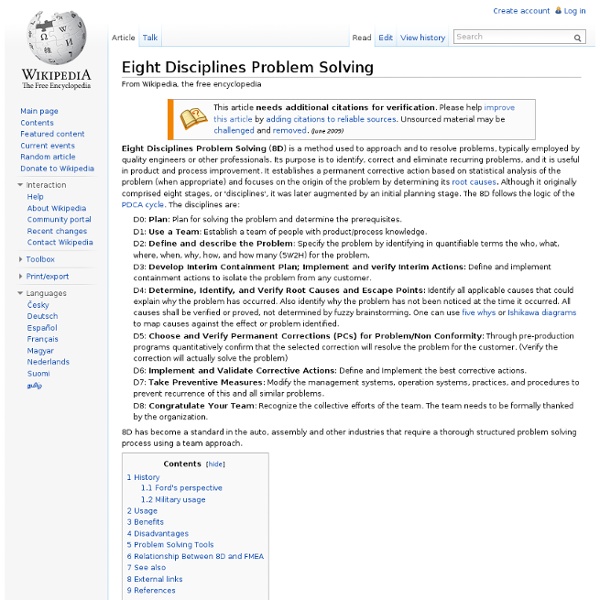Eight Disciplines Problem Solving

Project Management Templates and Resources - ProjectConnections.com
Matrice BCG
Un article de Wikipédia, l'encyclopédie libre. La matrice BCG (Boston Consulting Group, fin des années 1960) est un outil d'analyse utilisé en stratégie d'entreprise qui permet de justifier des choix d'allocation de ressources entre les différentes activités d'une entreprise diversifiée, présente sur plusieurs domaines d'activité stratégique (DAS en français, SBU - Strategic Business Unit - en anglais). Cet outil est utilisé par extension en marketing pour évaluer l'équilibre du portefeuille de produits d'une entreprise, mais ce n'est pas sa fonction initiale. Matrice BCG Construction de la matrice BCG[modifier | modifier le code] La matrice BCG permet de positionner chacun des DAS de l'entreprise selon deux axes : ce que rapporte chaque DAS, mesuré par sa part de marché relative, c'est-à-dire la part de marché du DAS divisée par celle du leader sur le même marché (ou par rapport au numéro 2 sur le marché si l'entreprise est elle-même leader). La matrice BCG repose sur trois hypothèses :
Gestion - Modèles
<div class="cdOLblEmRed cdSearchResultsMargin">Avertissement : ce site requiert l'utilisation de scripts, ce que votre navigateur n'autorise pas actuellement. <a href=" comment activer les scripts.</a><br/></div> Tous les produits Word Excel PowerPoint Access Outlook OneNote InfoPath Project Standard 2013 Publisher Visio Planification d'un projet de création d...Project 2003 Impossible de trouver ce que vous recherchez ? Planification d'un projet de création d'entreprise Project 2003 Description Fourni par Version : Téléchargements : Taille du fichier : Évaluation :
Related:
Related:



